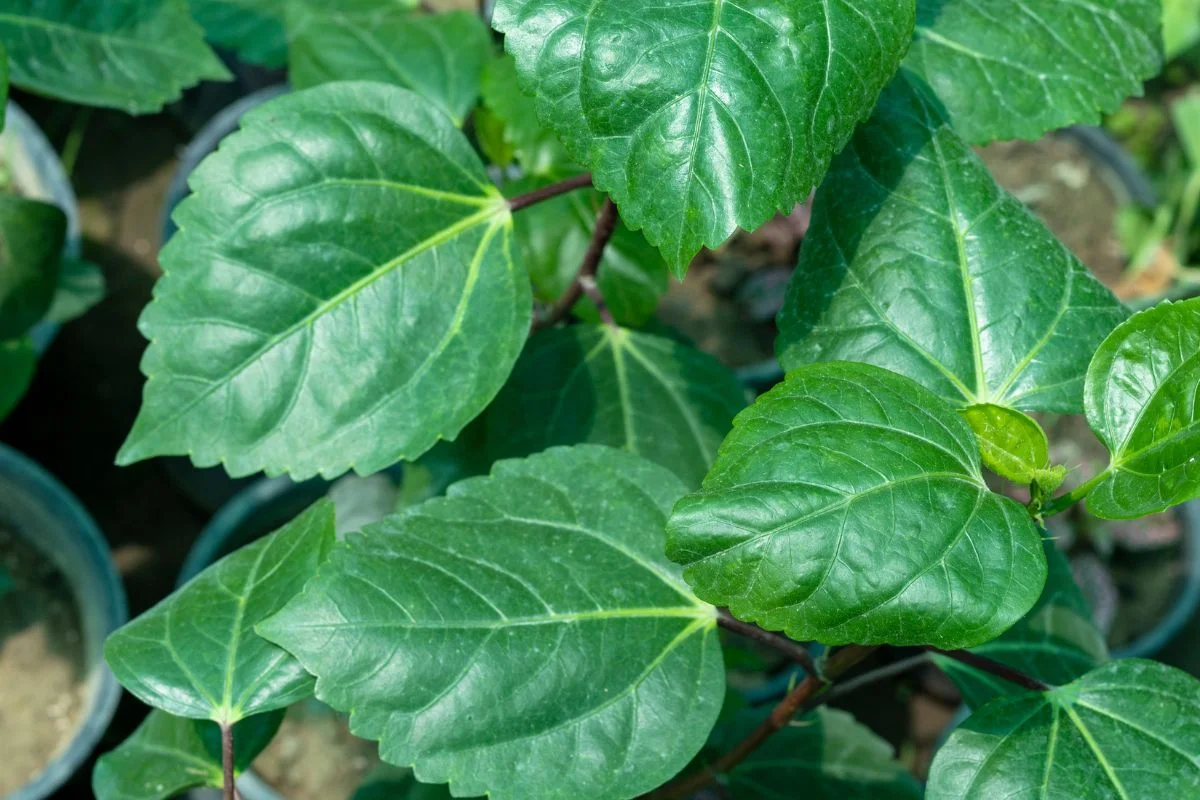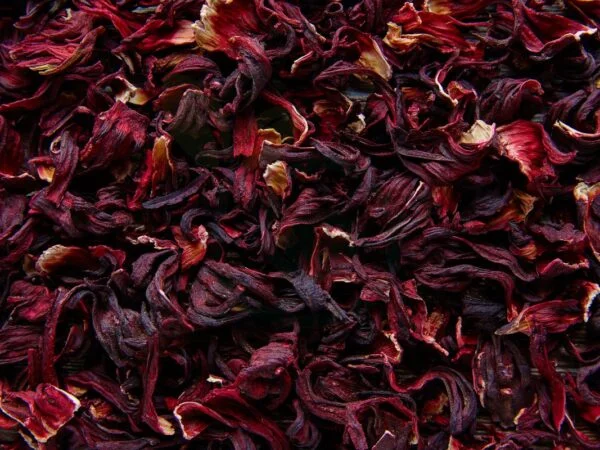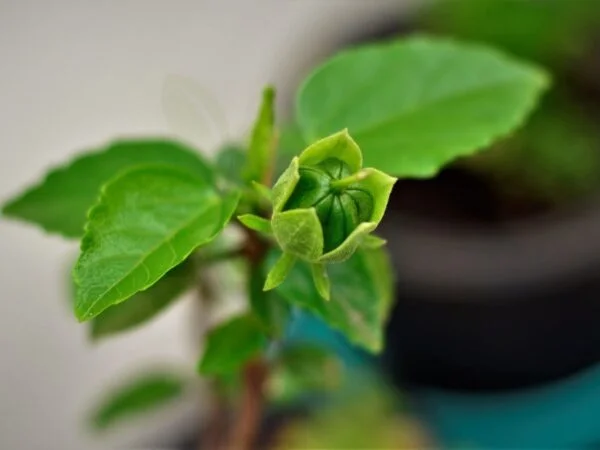Looking to propagate hibiscus from cuttings in water? We've got you covered! This step-by-step guide will walk you through the process, making it easy and enjoyable to grow your own beautiful hibiscus plants right at home.
Key Takeaways
- Choose Healthy Cuttings: Select healthy hibiscus cuttings with no signs of disease or damage for successful propagation of new plants.
- Provide Proper Care: Ensure the water propagation setup has enough light, warmth, and humidity to support root growth.
- Monitor Progress: Regularly check the cuttings for root development and adjust care as needed to enhance success rates.
- Transplant with Care: When moving water-rooted cuttings to soil, handle them gently to avoid damaging the delicate roots.
- Troubleshoot Wisely: Address common issues like rot, pests, diseases, or wilting promptly by adjusting watering frequency or providing better airflow.
- Enhance Success: Boost propagation success by using rooting hormone, maintaining consistent conditions, and being patient with the process.
Hibiscus Propagation Basics
Understanding Cuttings
Using cuttings for hibiscus propagation allows for cloning of desired plant characteristics. The benefits include faster growth, consistent traits, and bypassing seed germination time. Understanding the anatomy of a cutting is crucial to ensure successful root development.
Best Season for Propagation
The ideal seasons for hibiscus propagation are spring and early summer when plants are actively growing. Seasonal variations like temperature and daylight hours can significantly impact the success rate of propagation. Choosing the right season is pivotal for optimal root establishment and overall plant health.
Required Tools
- Sharp pruning shears: essential for making clean cuts on hibiscus stems.
- Rooting hormone: aids in root development when propagating in water.
- Clear glass or container: allows monitoring of root growth.
- Distilled water: prevents harmful chemicals from affecting the cuttings. Having the correct tools ensures a smooth propagation process, leading to successful rooting and healthy plant growth.
Choosing the Right Cutting
Healthy Stem Selection
When selecting a cutting for hibiscus propagation, look for a stem that is healthy and vigorous. A healthy stem typically has green coloration, indicating active growth. It should be free from any signs of disease or damage.
To identify a suitable stem for water propagation, choose one that is firm and flexible. Avoid stems that are woody or brittle, as they may not root successfully in water. A good cutting will have at least two leaf nodes, which are essential for root development.
A healthy stem plays a crucial role in the success of root development during propagation. It provides the necessary nutrients and moisture to support the growth of new roots. Ensuring you start with a healthy stem sets the foundation for a successful propagation process.
Length and Thickness
Consider the length and thickness of the cutting when propagating hibiscus in water. Optimal length ensures there is enough surface area for root development, while thickness influences the cutting's ability to absorb water and nutrients.
The size of the cutting directly impacts root development. A cutting that is too short may not have sufficient nodes for roots to emerge, while one that is too long might struggle to establish itself in water. Aim for a cutting that is around 4-6 inches long, with a diameter of about ¼ inch.
Guidelines on length and thickness help ensure successful propagation by providing the cutting with adequate resources to develop strong roots in water.
Leaf Arrangement
The leaf arrangement on the cutting can significantly impact its ability to root successfully. Ensure that you maintain the proper leaf orientation when preparing the cutting, as this can influence how effectively it absorbs nutrients and develops roots.
Leaf arrangement affects the rooting process by influencing how efficiently the cutting can photosynthesize and produce energy for root growth. When handling leaves during preparation, be gentle to avoid damaging them, as healthy leaves contribute to overall plant health during propagation.
Handling leaf arrangement carefully ensures that your hibiscus cutting has optimal conditions for rooting in water, leading to successful propagation outcomes.
Preparing the Cutting
Cutting Technique
To propagate hibiscus from cuttings in water, ensure you use sharp, clean shears for a precise cut. This technique impacts root development significantly. Make a diagonal cut just below a leaf node to encourage new growth.
Trimming leaves before placing the cutting in water is crucial for root growth. By removing excess leaves, you allow the cutting to focus its energy on developing roots. Trim about half of the leaves to promote successful propagation.
Leaf Trimming
Before immersing the cutting in water, let it heal for a few hours or overnight. This period allows the fresh wound to callus over, reducing the risk of rotting. Longer healing periods can prevent infections and boost root development.
During this healing period, keep the cutting in a warm, dry place away from direct sunlight. Once the wound has dried and callused, it's ready to be placed in water for propagation. A healing period of 2-3 hours is usually sufficient.
Healing Period
Allowing the cutting to rest after trimming ensures optimal conditions for root development. The healing process helps prevent infections and encourages healthy root growth. Keep an eye on the cutting during this time to ensure no signs of rot develop.
After the healing period, place the cutting in a container filled with room temperature water. Change the water every few days to prevent stagnation and bacterial growth. Within a few weeks, you should start seeing roots forming at the base of the cutting.
Water Propagation Setup
Selecting Containers
When propagating hibiscus in water, choosing the right container is crucial for successful root development. The container size should be adequate to allow the cutting to comfortably fit without overcrowding. Opt for a clear glass or plastic container to monitor root growth easily.
To ensure optimal rooting conditions, select a container that is transparent and allows light penetration. This helps in promoting photosynthesis, essential for root development. Avoid containers that are too large as they can lead to stagnant water, increasing the risk of rotting the cutting.
- Choose a clear glass or plastic container.
- Opt for a moderately-sized container to prevent overcrowding.
- Ensure the container allows light penetration for photosynthesis.
Water Type and Temperature
Using the right type of water is essential when propagating hibiscus cuttings in water. Utilize distilled or filtered water to avoid harmful chemicals present in tap water that can impede root growth. Maintaining an ideal water temperature between 65-75°F (18-24°C) promotes faster root development.
For successful propagation, keep in mind that water quality matters significantly. Impurities in tap water can hinder root growth and overall plant health. Maintain a consistent water temperature within the recommended range for optimal results.
- Use distilled or filtered water.
- Maintain water temperature between 65-75°F (18-24°C).
- Ensure consistent water quality throughout the propagation process.
Positioning the Cutting
When placing the hibiscus cutting in water, ensure it is done correctly to encourage healthy root formation. Position the cutting with at least two nodes submerged underwater to facilitate root emergence. Properly positioning the cutting ensures sufficient hydration and nutrient uptake for robust root growth.
To promote successful propagation, position the cutting in a way that allows ample access to oxygen while being fully submerged. This balance ensures that roots develop efficiently without risking rot due to inadequate oxygen supply.
- Submerge at least two nodes of the cutting underwater.
- Position the cutting to allow access to oxygen while submerged.
- Ensure proper hydration and nutrient uptake by positioning correctly.
Caring for Water-Rooted Cuttings
Light Requirements
Proper light exposure is crucial for successful root development in hibiscus cuttings placed in water. Direct sunlight can boost growth, but avoid intense midday sun to prevent wilting. Aim for bright, indirect light for optimal results.
To ensure healthy growth, monitor the amount of light your cuttings receive daily. Rotate the container if necessary to provide even lighting on all sides. Avoid placing the cuttings in dark corners or areas with minimal natural light.
- Direct sunlight boosts growth
- Rotate container for even lighting
- Avoid dark corners
Changing Water Regularly
Regularly changing the water in which softwood cuttings are propagated is essential for their well-being. Stagnant water can lead to oxygen deprivation, hindering root growth. Change the water every 2-3 days for best outcomes.
Frequent water changes help maintain oxygen levels and prevent the buildup of harmful bacteria. Ensure the container is clean before refilling it with fresh water to support healthy root development.
- Stagnant water hinders root growth
- Change water every 2-3 days
Monitoring Growth
Monitoring the growth of your hibiscus cuttings in water is key to ensuring successful propagation. Look for signs of root development such as tiny white roots emerging from the stem nodes. Keep track of any changes in root length over time.
Regularly inspect the cuttings for any signs of rot or mold formation, which can indicate poor health or improper care. Adjust your watering frequency or lighting conditions based on the progress you observe.
- Signs of root development: tiny white roots
- Check for rot or mold regularly
Transplanting to Soil
When to Transplant
To determine transplantation readiness, look for well-established root systems and healthy leaf growth on the cutting. Timing is crucial; wait until roots are at least a few inches long before moving the cutting to soil. Transplant hibiscus cuttings during the warm season for optimal growth.
Preparing the Soil Mix
Creating an ideal soil mix is essential for successful transplantation. Use a mix that provides good drainage, like a combination of potting soil, perlite, and sand. Ensure the soil mix promotes root development and prevents waterlogging.
Acclimatization Process
The acclimatization process is vital to prevent shock when transitioning cuttings to soil. Gradually introduce the rooted cutting to outdoor conditions by starting with short periods of exposure. Monitor the plant closely during this period to ensure it adapts smoothly.
Troubleshooting Common Issues
Root Rot Prevention
Root rot in hibiscus cuttings can be prevented by ensuring proper drainage in the container. Avoid overwatering to prevent waterlogging, a common cause of root rot. Maintain well-draining soil to keep roots healthy and disease-free.
To avoid root rot, ensure that the cutting is not sitting in water for prolonged periods. This can suffocate the roots and lead to decay. Use containers with drainage holes to allow excess water to escape, promoting healthy root growth.
Maintain optimal conditions by providing adequate sunlight and ventilation. Avoid overcrowding cuttings in a single container, as this can create a damp environment conducive to root rot development.
Dealing with Algae Growth
Algae growth in the water during propagation can hinder root development. To address this issue, cover the container with a dark material to block out light, which algae need for growth. Regularly change the water to prevent algae buildup.
Algae can compete with hibiscus cuttings for nutrients and oxygen, affecting their growth negatively. To control algae growth, consider adding a small amount of hydrogen peroxide to the water periodically. This can help inhibit algae without harming the cuttings.
Prevent algae growth by placing the propagation container in an area with indirect sunlight. Direct sunlight can promote algae growth, so ensure the location is well-lit but shielded from intense sunlight exposure.
Slow Rooting Solutions
If you notice slow root development in hibiscus cuttings, check for issues such as inadequate moisture or low temperatures. Ensure that the cutting receives sufficient warmth and humidity to promote root growth effectively.
To accelerate root growth, consider using a rooting hormone on the cut end of the hibiscus cutting before placing it in water. This can stimulate root development and increase the chances of successful propagation.
Address common issues hindering rooting by monitoring the health of the cutting regularly. Trim any decaying or unhealthy parts promptly to prevent further damage and encourage new root growth effectively.
Enhancing Propagation Success
Using Rooting Hormones
Rooting hormones boost the success rate of hibiscus propagation by stimulating root growth efficiently. They enhance the development of strong and healthy roots, critical for the cutting's survival. To apply rooting hormones, dip the cut end of the hibiscus cutting into the hormone solution before planting.
Ideal Water pH Levels
Maintaining optimal water pH levels is crucial for ensuring robust root growth in hibiscus cuttings. Inappropriate pH levels can negatively affect the health and development of the roots. Aim for a slightly acidic pH around 6.0 to 6.5 for successful propagation.
Temperature Control
Controlling temperature plays a vital role in successful hibiscus propagation from cuttings. The ideal temperature range for promoting root development typically falls between 70-80°F. Consistency in temperature is key; avoid extreme fluctuations to support healthy root formation.
Beyond Propagation
Fertilizing Young Plants
Fertilization plays a crucial role in supporting the growth of young hibiscus plants by providing essential nutrients. Organic fertilizers are ideal for hibiscus cuttings as they release nutrients slowly, promoting steady growth. Inorganic fertilizers can also be used but require careful application to prevent over-fertilization.
When it comes to fertilizing young plants, apply fertilizer at half-strength every two weeks during the growing season. Avoid fertilizing during the dormant period to prevent stressing the plant. Water the plant before and after applying fertilizer to help with nutrient absorption.
Pruning for Bushier Growth
Pruning is essential for promoting bushier growth in hibiscus plants by encouraging lateral branching. Regular pruning helps remove dead or weak branches, allowing the plant to focus its energy on healthy growth. To promote bushier growth, prune back one-third of the plant's length each year after flowering.
For best results, prune young hibiscus plants in early spring before new growth appears. Use sharp, clean pruners to make precise cuts and shape the plant according to your desired form. Regular pruning not only maintains plant health but also enhances flower production.
Pest and Disease Management
Common pests that may affect hibiscus plants include aphids, spider mites, and whiteflies, while diseases like powdery mildew and leaf spot can also occur. To prevent infestations, regularly inspect your plants for any signs of pests or diseases. Treatments such as neem oil or insecticidal soap can help control pest populations effectively.
Maintaining good plant hygiene by removing fallen leaves and debris can prevent disease spread. Ensure proper watering practices to avoid waterlogged soil, which can lead to root rot and other fungal issues. By addressing pest and disease issues promptly, you can maintain the health and vitality of your hibiscus plants.
Final Remarks
You now possess the essential knowledge to successfully propagate hibiscus from cuttings in water. Remember to choose healthy cuttings, provide optimal care, and troubleshoot any issues that may arise. By following these steps diligently, you increase the likelihood of successful propagation and thriving hibiscus plants in your garden.
Continue exploring the world of plant propagation and gardening beyond this guide. Share your newfound expertise with fellow gardening enthusiasts and inspire them to embark on their propagation journey. Your dedication to learning and growing as a gardener will undoubtedly yield beautiful results. Happy propagating!
Frequently Asked Questions
How do I choose the right cutting for hibiscus propagation?
To choose the right cutting for hibiscus propagation, look for a healthy stem that is about 4-6 inches long. Ensure it has at least 2-3 leaf nodes and is free from diseases or pests. Select a cutting from a mature, established plant for better success.
Can I propagate hibiscus in water without using rooting hormone?
Yes, you can propagate hibiscus in water without using rooting hormone. While rooting hormone can help speed up the process, hibiscus cuttings can still successfully root in water without it. Ensure to change the water regularly to prevent rotting and maintain a clean environment.
How often should I change the water when propagating hibiscus cuttings?
Change the water for propagating hibiscus cuttings every 2-3 days to prevent stagnation and ensure oxygen levels remain optimal for root development. Fresh, clean water helps prevent bacterial growth and keeps the cuttings healthy during the propagation process.
When is the best time of year to propagate hibiscus from cuttings in water?
The best time to propagate hibiscus from cuttings in water is during the spring or early summer months when plants are actively growing. This period provides optimal conditions for successful root development and overall propagation success.
How long does it take for hibiscus cuttings to root in water?
Hibiscus cuttings typically take around 3-6 weeks to develop roots when propagated in water. However, this timeline can vary based on factors like temperature, light exposure, and the health of the cutting. Patience is key during this process as roots gradually form before transplanting into soil.
Image Source: Paid image from CANVA




